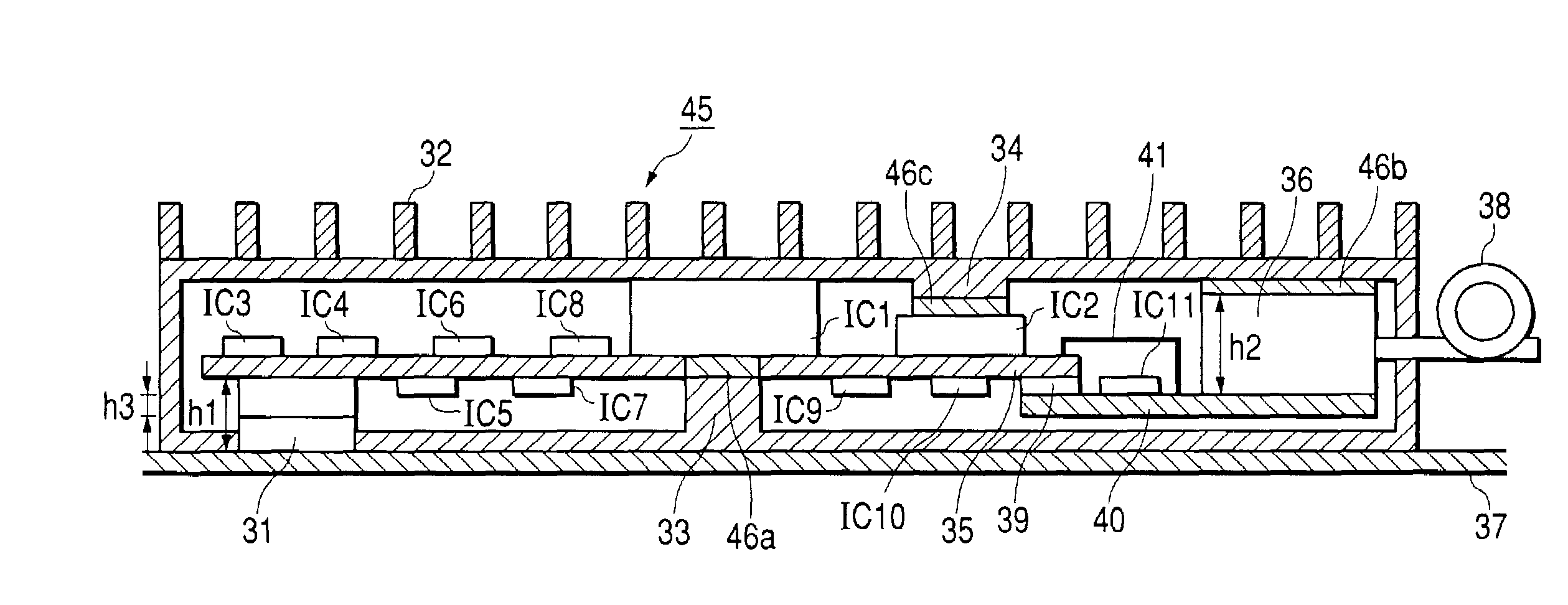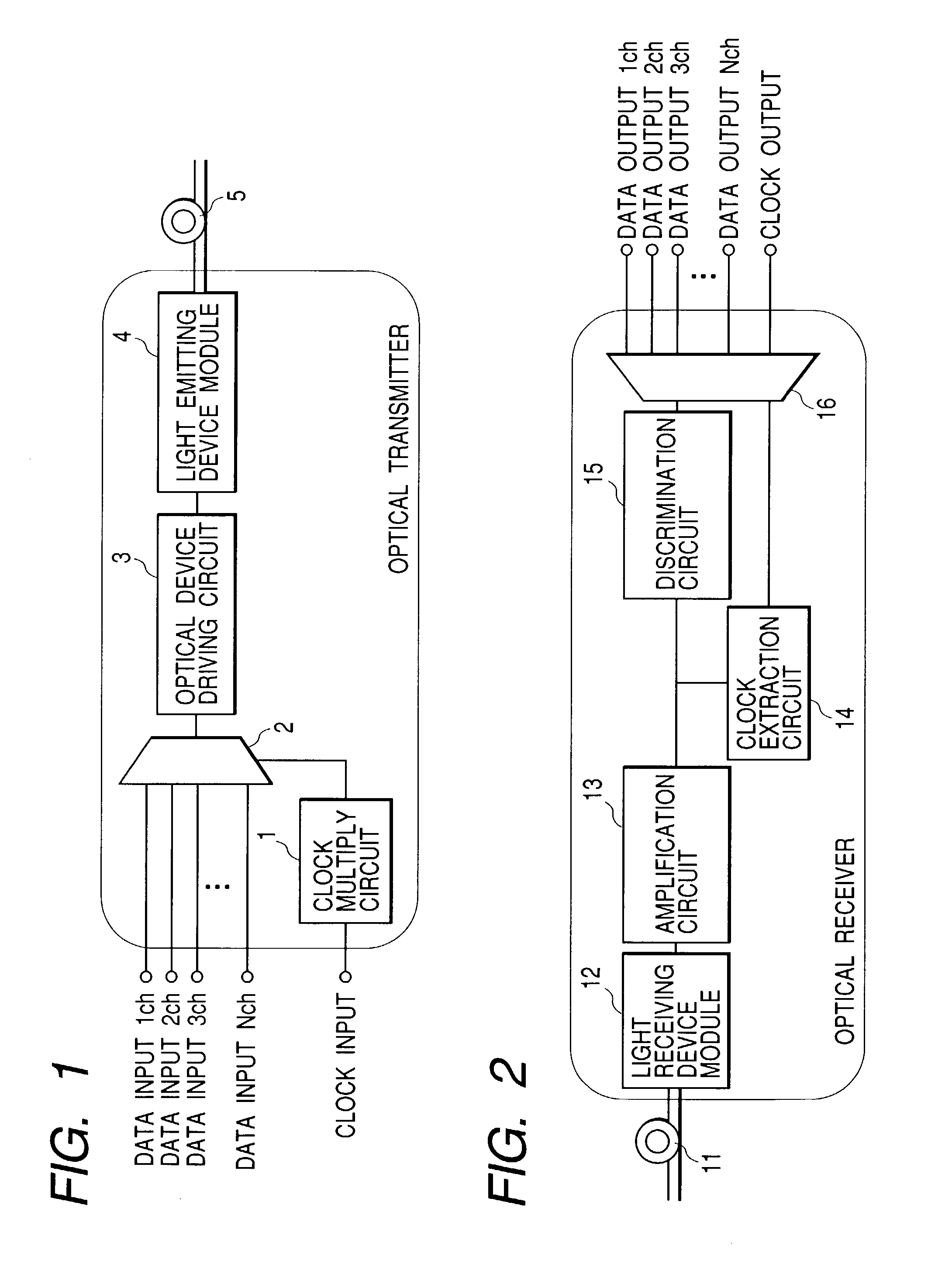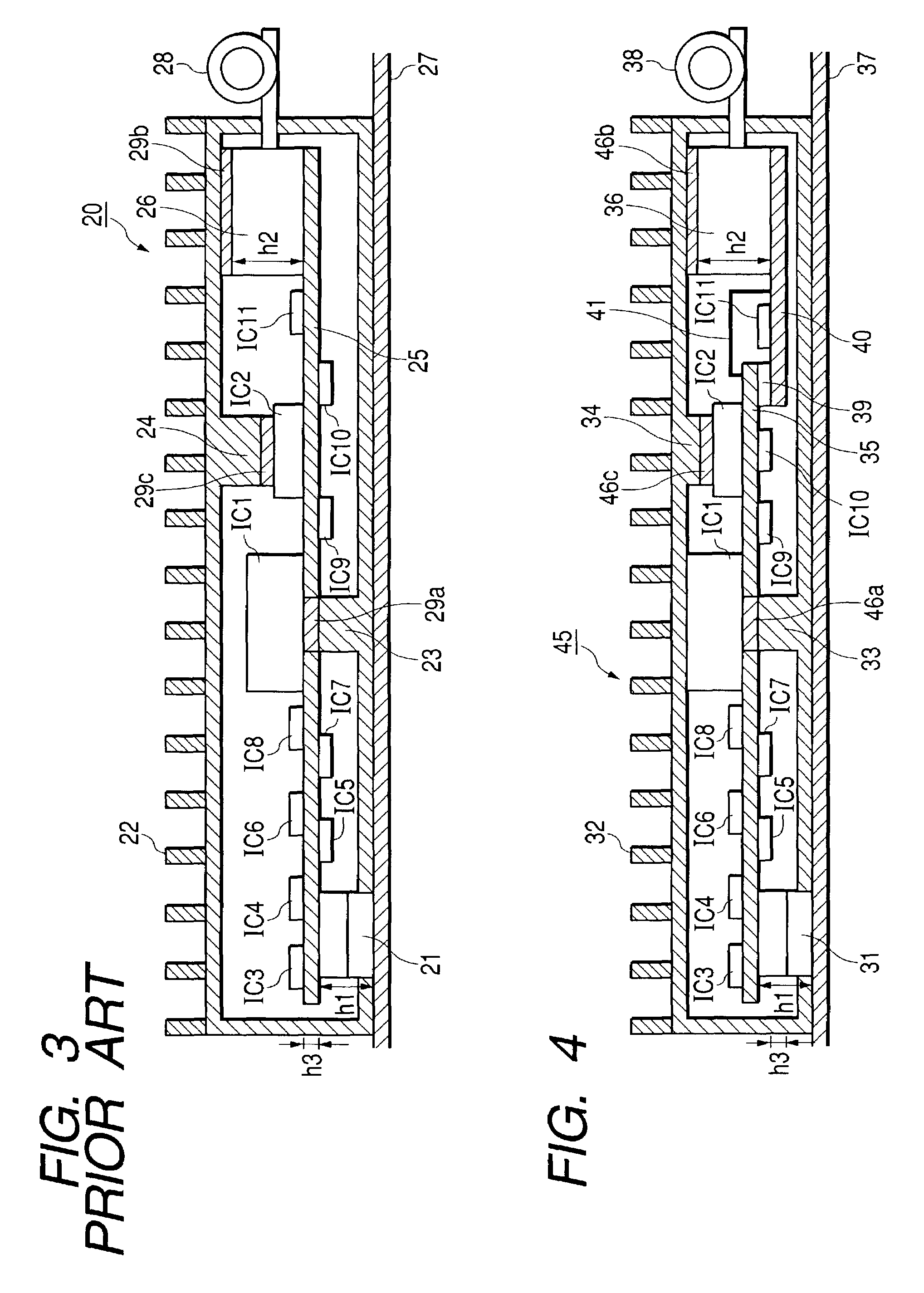Optical communication device, optical transmitter, optical transmitter-receiver, and optical transmission system
a communication device and optical transmitter technology, applied in the direction of electrical apparatus construction details, electrical instruments, support structure mounting, etc., can solve the problems of hard to meet the required specifications the standardized requirements are difficult to meet, so as to achieve the structural compactness of the optical transmitter and receiver, enhance cooling behavior, and increase the area of the circuit board
- Summary
- Abstract
- Description
- Claims
- Application Information
AI Technical Summary
Benefits of technology
Problems solved by technology
Method used
Image
Examples
first embodiment
[0029]FIG. 4 is a partly sectional side view of one example of the optical transmitter-receiver according to the invention, and FIG. 5 is an exemplary view of the disposition of the components of the optical transmitter-receiver according to the invention. FIG. 4 shows the optical transmitter and receiver arranged substantially in the same manner and the cross sectional view thereof taken along the line A1-A2 or B1-B2.
[0030]In this embodiment, a printed circuit board contained in a housing 45 provided with heat sinks 32 is divided into circuit boards 35 and 40. An electric connector 31 with the height of h1 is connected between a mother board 37 and the printed circuit board 35. ICs 1 to 10 are mounted on the printed circuit board 35 while an IC11 and an optical device module 36 are mounted on the printed circuit board 40. Among the components mounted on the printed circuit boards 35 and 40, it is assumed that the highest component of all is the optical device module 36. The printed...
second embodiment
[0039]FIG. 6 is an exemplary view of the disposition of the components of the optical transmitter-receiver according to the invention. As shown in the figure, the light emitting device driving circuit 3 is consolidated into the light emitting device module 4 so as to turn into a driving circuit combined light emitting device module 48, and the amplification circuit 13 is consolidated into the light receiving device module so as to turn into an amplification circuit combined light receiving device module 12. As mentioned above, the light emitting device driving circuit 3 may be consolidated into the clock multiply and data multiplexing circuit 54, and the amplification circuit 13 may be consolidated into the discrimination and isolation circuit 55.
third embodiment
[0040]FIG. 7 is an exemplary view of the disposition of the components of the optical transmitter-receiver according to the invention. As shown in the figure, the printed circuit board is split into circuit boards 40a and 40b, in which board 40a there are mounted a light emitting device module 4 and a light emitting device driving circuit 3 and in which board 40b there are mounted a light receiving device module 12 and an amplification circuit 13. In this case, the fixing position of the respective circuit boards is set according to the size of the respective components, which gives larger latitude in the layout design of the circuit board. When deteriorated parts or defects are found, only the circuit board with such parts mounted is removed for repair or replacement, resulting in improvement of productivity.
PUM
 Login to View More
Login to View More Abstract
Description
Claims
Application Information
 Login to View More
Login to View More - R&D
- Intellectual Property
- Life Sciences
- Materials
- Tech Scout
- Unparalleled Data Quality
- Higher Quality Content
- 60% Fewer Hallucinations
Browse by: Latest US Patents, China's latest patents, Technical Efficacy Thesaurus, Application Domain, Technology Topic, Popular Technical Reports.
© 2025 PatSnap. All rights reserved.Legal|Privacy policy|Modern Slavery Act Transparency Statement|Sitemap|About US| Contact US: help@patsnap.com



